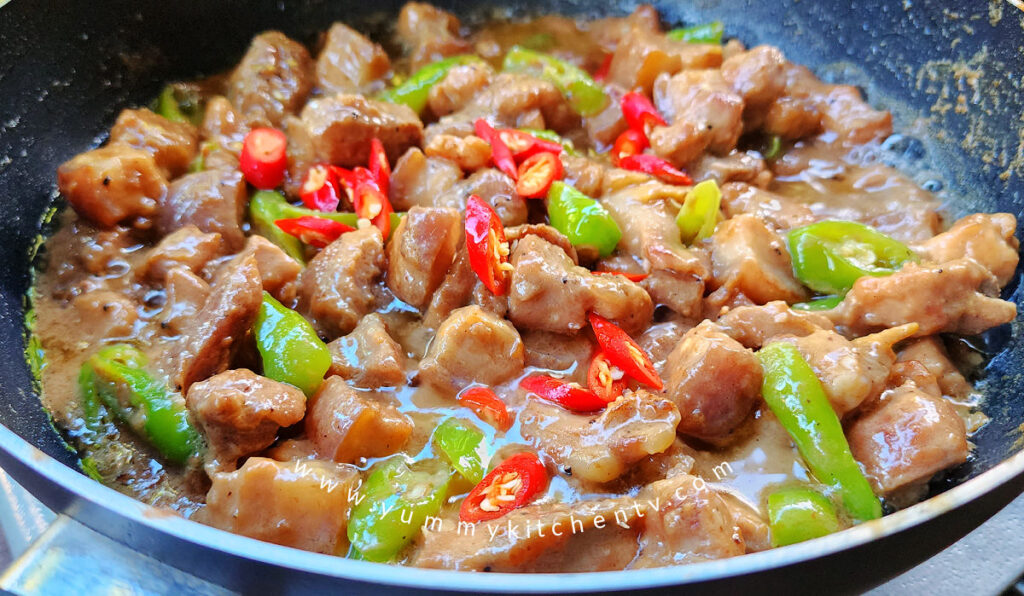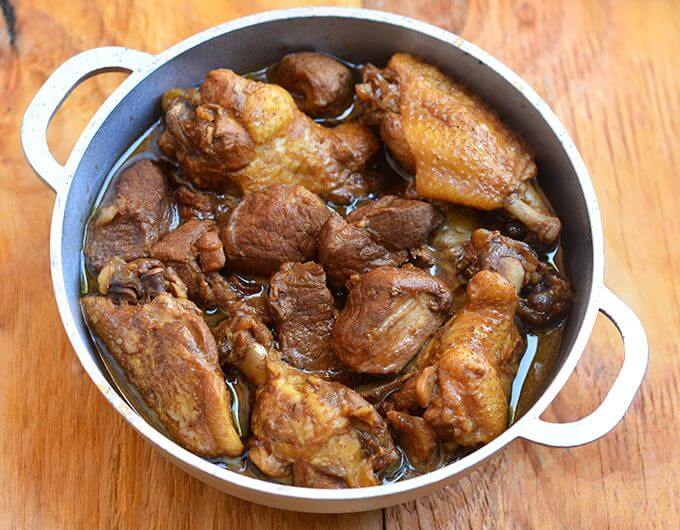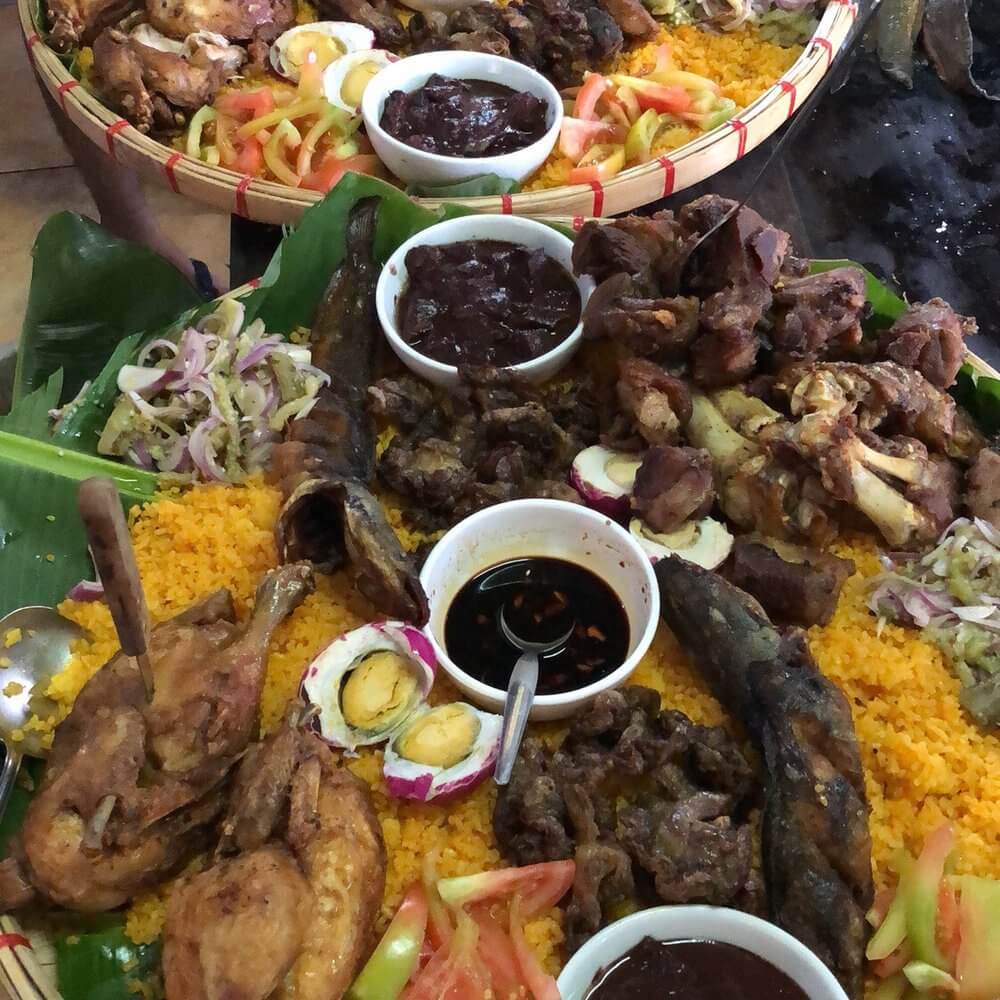Introduction
Bicol Express is a renowned Filipino dish known for its rich and spicy flavor. This beloved dish has a fascinating history, deeply rooted in the Bicol region of the Philippines.
Brief history of Bicol Express
Originally named after a passenger train service that traveled from Manila to Bicol, this dish was created in the 1940s. It was invented by Ms. Cely Kalaw, a Bicolana restaurateur. The dish was initially made with pork, shrimp paste, and coconut milk, creating a rich and spicy flavor profile.
What is Bicol Express?
A spicy Filipino stew made with pork, coconut milk, and chili peppers. It is known for its rich, creamy texture and fiery taste, making it a favorite among spice lovers.
Ingredients
Main ingredients
- Pork: Traditionally, Bicol Express is made with pork belly, but other cuts of pork, such as shoulder or loin, can also be used.
- Coconut milk: The base of Bicol Express, coconut milk adds a creamy texture and a hint of sweetness to the dish.
- Chili peppers are the key ingredient that gives Bicol Express its signature spicy kick. Bird’s eye chilies, also known as siling labuyo, are commonly used.
Optional ingredients
- Shrimp paste: Also known as bagoong, shrimp paste adds depth of flavor to Bicol Express. However, it can be omitted for a vegetarian version of the dish.
- Vegetables: While not traditional, vegetables such as string beans and eggplant can be added to Bicol Express for added texture and flavor.
Preparation
- Preparing the pork
- Start by cutting the pork into bite-sized pieces. Season with salt and pepper, and set aside.
- Making the coconut milk base
- In a pan, heat some oil over medium heat. Add garlic, onions, and ginger, and sauté until fragrant. Add the coconut milk and bring to a simmer.
- Adding the chili peppers
- Once the coconut milk is simmering, add the chili peppers. Adjust the amount according to your desired level of spiciness.
- Cooking process
- Sauteing the aromatics
- In a separate pan, sauté garlic, onions, and ginger until fragrant. Add the pork pieces and cook until browned.
- Adding the pork and coconut milk
- Transfer the browned pork to the pan with the coconut milk. Stir to combine, making sure the pork is fully coated in the coconut milk mixture.
- Simmering until tender
- Cover the pan and let simmer over low heat until the pork is tender and the flavors have melded together.
- Adjusting the taste
- Taste the Bicol Express and adjust the seasoning as needed. Add more salt, pepper, or chili peppers according to your preference.
- Serving suggestions
Traditional accompaniments
- Rice: Bicol Express is traditionally served with steamed rice, which helps balance out the spiciness of the dish.
- Pili nuts: Pili nuts, native to the Bicol region, are often served as a crunchy topping for Bicol Express, adding texture and flavor.
Modern twists
- Bicol Express pasta: For a modern twist on this classic dish, try serving Bicol Express over pasta instead of rice.
- Bicol Express pizza: Another creative way to enjoy Bicol Express is by using it as a topping for pizza. The spicy flavor of the Bicol Express pairs perfectly with the richness of melted cheese and the crispiness of the pizza crust.
Variations
Seafood Bicol Express
For a seafood version of Bicol Express, substitute the pork with shrimp, squid, or fish. The seafood adds a deliciously briny flavor to the dish, while still maintaining the signature spiciness of Bicol Express.
Vegetarian Bicol Express
For a vegetarian version of Bicol Express, omit the pork and shrimp paste, and add more vegetables such as string beans, eggplant, and tofu. The creamy coconut milk base and spicy chili peppers ensure that even without meat, this dish is still packed with flavor.

Featured Image Credit: Yummy Kitchen
Health benefits of Bicol Express
Nutritional value of Bicol Express
Despite its rich and creamy texture, Bicol Express can be a nutritious dish. Coconut milk is rich in healthy fats, while pork provides protein and essential nutrients.
Potential health concerns
However, it is also high in calories and fat, so it should be enjoyed in moderation as part of a balanced diet. Additionally, the high levels of chili peppers may cause digestive discomfort for some people.
Cultural significance
Bicol Express in Filipino cuisine It not just a dish; it’s a cultural icon. It represents the bold and spicy flavors of Filipino cuisine, and is a beloved comfort food for many Filipinos.
Bicol Express festivals
In the Bicol region of the Philippines, there are several festivals dedicated to Bicol Express. These festivals celebrate the dish’s cultural significance and showcase the many different ways it can be prepared and enjoyed.
Where to find Bicol Express
Restaurants in the Philippines It can be found in restaurants throughout the Philippines, especially in the Bicol region, where it originated. Each restaurant puts its own unique twist on the dish, so no two versions of Bicol Express are exactly alike.
Filipino communities worldwide
For those outside of the Philippines, Bicol Express can often be found in Filipino restaurants and communities worldwide. Whether you’re in the Philippines or abroad, you’re never too far from a delicious plate of Bicol Express.
Conclusion
Bicol Express is more than just a dish; it’s a culinary journey through the flavors and traditions of the Philippines. Whether you prefer it spicy or mild, with pork or seafood, there’s no denying the irresistible allure of Bicol Express. So why not give it a try and experience the magic of this iconic Filipino dish for yourself?
Share this post: on Twitter on Facebook



Pingback: Discover the Majestic Mayon Volcano | Travelista PH
Car rental is the best choice for traveling, unlimited possibilities.
How not to screw up when renting a car, for a safe and comfortable trip
Just wish to say your article is as astounding. The clearness in your submit is simply spectacular and i can think you’re a professional on this subject. Well together with your permission allow me to grasp your RSS feed to stay up to date with forthcoming post. Thank you 1,000,000 and please carry on the enjoyable work.